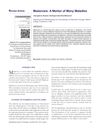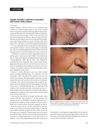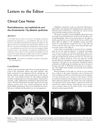Central States Dermatological Society: A Case of Lipoid Proteinosis in a 5-Year-Old Girl
January 1962
in “
Archives of Dermatology
”
TLDR A 5-year-old girl has lipoid proteinosis, causing voice issues, hair thinning, skin lesions, and tongue movement problems.
A 5-year-old white girl presented with lipoid proteinosis, characterized by a raspy, hoarse voice, thinning scalp hair, and recurrent crusted lesions leading to pock-like scars since infancy. Physical examination revealed sparse hair growth on the frontoparietal scalp, atrophic macular areas on various parts of the body, and keratotic yellowish papules on the fingers. The patient had difficulty protruding her tongue due to a short thickened frenulum. No other family members, including her fraternal twin, were affected, and there was no history of consanguinity or diabetes.




